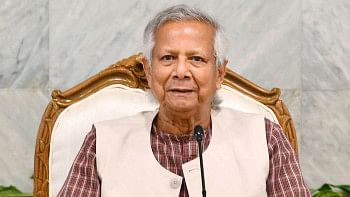Sreesree Chaitannya Charitamrita Avidhan: A Lexicon of Medieval Bengali Thesaurus

Sreesree Chaitannya Charitamrita Avidhan is a lexicon enriched with the words and phrases found in the maxims and discourses propagated by Sree Chaitannya Mahaprabhu (1486-1534), a highly venerated monk and theologian in the history of the Indian Subcontinent. He was born in 1486 in Nabadwip, a municipality in Nadia District of present day West Bengal. On top of practicing monasticism, Sree Chaitannya used to work for beneficial transformations of the society around him through his theological knowledge and philanthropic roles. Professor Nandalal Sharma has recently capped off a massive research-oriented task by compiling a voluminous Bengali dictionary with interpretations of the words and idioms he came across while scrutinizing the biography of Sree Chaitannya. By doing so, Professor Nandalal Sharma has actually developed a compendious corpus of medieval Bengali language which takes the readers back to different trajectories of 15th century Bengali literature, linguistics and Bengali philosophy.
Professor Nandalal Sharma is a widely acclaimed educationist and philologist of Bangladesh. He had been a teacher of Bengali language and literature for around thirty years. For last few years, he has been teaching at Metropolitan University, Sylhet in the capacity of a Professor, Controller of Examinations and Proctor. He has so far written over fifty books on the linguistic, literary and cultural history of Bangladesh and some of his books are often named as references in publications by other authors and researchers.
While going through this lexicon, some amazing things caught my vision. Sree Chaitannya's biography was perused by Karl Marx and he referred to Sree Chaitannya as a social reformist, according to Ethnological Notebooks of Karl Marx by Lawrence Krader. Moreover, German scholar Otto Stursberg and Edward C. Dimock, Professor Emeritus of University of Chicago, USA also penned research papers on Sree Chaitannya's monkhood and humanitarian contributions.
Lexicography is a broad arena of linguistic studies and blending lexicography with theological adages and monastic musings would certainly lead to an innovative approach to any lexical work. This book Sreesree Chaitannya Charitamrita Avidhan is a firm evidence of this statement. Most of the words found in this dictionary by Professor Nandalal Sharma originated from ancient Sanskrit language; however, there are lots of words which are used in current Bengali language too. This book may also be consulted as a deeply conducive text for better understanding of medieval Bengali literature as well. By looking into medieval Bengali language and offering a semantic dimension to this book, Professor Nandalal Sharma has made a valiant effort to regenerate eagerness in the minds of readers to pick up and peruse classical and primitive Bengali verses and prose. From this point of view, this scholarly publication by Professor Nandalal Sharma is a plausible work to refurbish our love for classicism as far as the gemstones and jewels of Bengali creeds and fables are concerned. At present the young readers of Bangladesh, regrettably, have very little interest to explore the depth and luminosity of Bengali language and the Bengali literary works of current and previous centuries. Our young readers may be encouraged to acquire knowledge on our own long-cherished values and heritage by making them familiar with latest books on the linguistic and literature-oriented texts written in Bengali.
It needs to be presented categorically that Sreesree Chaitannya Charitamrita Avidhan is not a book of theology. Neither does it intend to idealize the image of a hermit. This book contains a good number of words linked directly with ascetic and theological notions, but that is not the only content of the book. There are hundreds of words which are closely associated with the day-to-day chores of our lives. This book is vital for comprehending the way Bengali language changed its course through last several centuries and arrived at its present shape. So, it would be a palpable text for language experts to excavate to mitigate their bibliophilic appetite. However, this book stands within the understanding power of general readers too as it's written in a decipherable and explicit diction.
Lives of theologians, social reformists, humanists teach us valuable lessons. Their words and the roles they play for the betterment of mankind work as a driving force behind the progress of human civilization. The life-sketch of Sree Chaitannya as illustrated by Professor Nandalal Sharma is a tale that beautifully stitches worldly matters with the celestial height of divinity. The spiritual thoughts expressed through the disquisitions by Sree Chaitannya have a profound bond with mankind's life on earth because life in this world is a prelude to life hereafter or another life after death, according to people believing in metempsychosis. Strikingly enough, Jalal Uddin Rumi of ancient Persia, Kahlil Gibran of Lebanon, Emily Dickinson and Walt Whitman of 19th century America—they all depicted metempsychosis in most of their poetry and prose.
The reviewer is Senior Lecturer, Department of English, Metropolitan University, Sylhet.


 For all latest news, follow The Daily Star's Google News channel.
For all latest news, follow The Daily Star's Google News channel. 



Comments